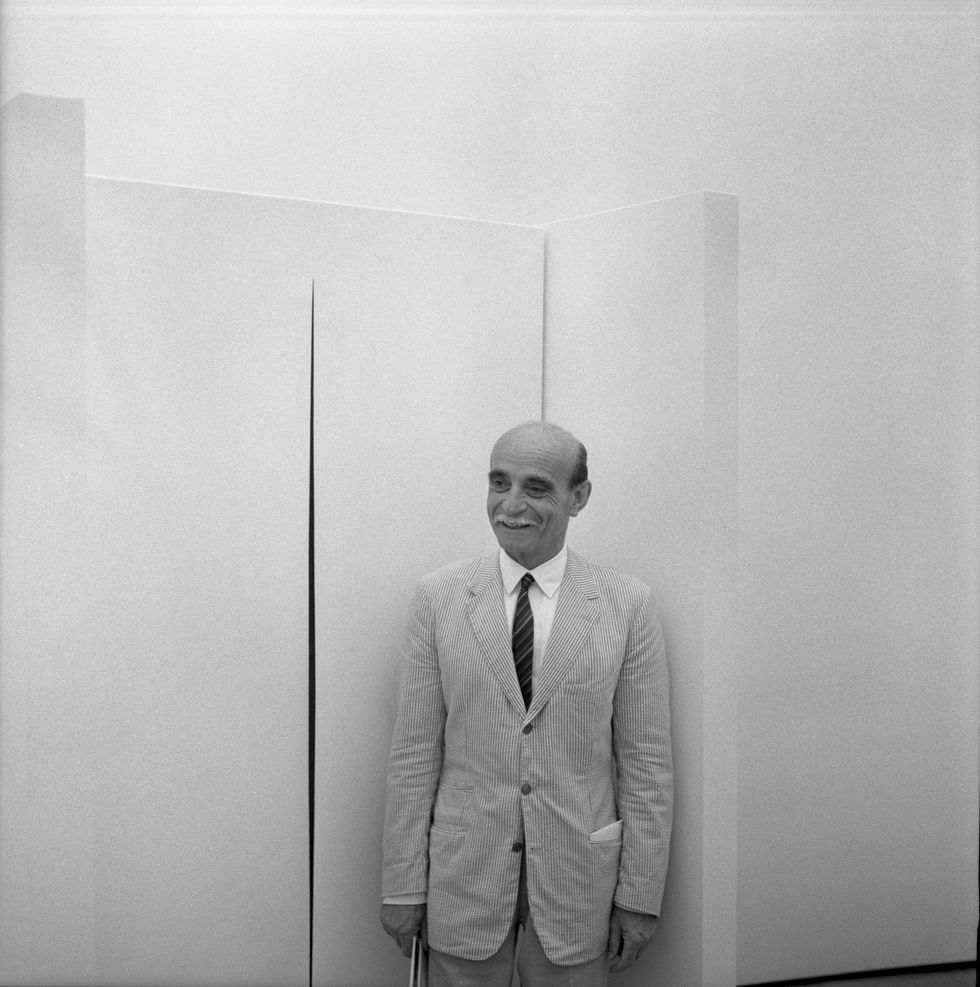Lucio Fontana

Lucio Fontana was born to an Italian father in 1899 in Rosario de Santa Fé (Argentina). From 1914 to 1917, he studied at the School of Construction in Milan. In 1917, he joined the army, wounded and reformed in 1918. At the end of the war, he undertook his art studies at the Brera Academy in Milan. Lucio Fontana leaves for a few years in Argentina, where he creates his first sculptures.<br />In 1928 he returned to Italy (Milan). Fontana explores all aspects of the material to achieve a purified art. Two years later, he co-founded with others the group of Italian “Astratta” artists. His first personal exhibition dates back to 1930. From 1939 to 1945, he took refuge in Buenos Aires, launching an "artistic protest" against the war.<br />His art was concretely affirmed after the Second World War; Fontana imposes himself with a decisive gesture that scratches, perforates, holes and sometimes tears the space of the canvas or paper. In 1946, he was responsible for the drafting of the "White Manifesto" which announced the end of the painted canvas and the affirmation of a more mobile and dynamic art, a change in content and at the same time formality.<br />Returning to Milan, in 1947, he published the "Spatial Manifesto". At the end of the 1940s, Fontana composed neon arabesques that he installed according to the places, with the aim of creating a "spatial environment"; The artist announces the end of art, paints interstellar abstractions, creates monochromes. Later, and with the aim of “opening the space”, he cuts his canvases with a knife stroke. In 1960 he returned to simple painted or sculpted forms, object sculptures.<br />Lucio Fontana passed away in 1968 in Varese.

 Hide filters
Hide filters
Validate your login